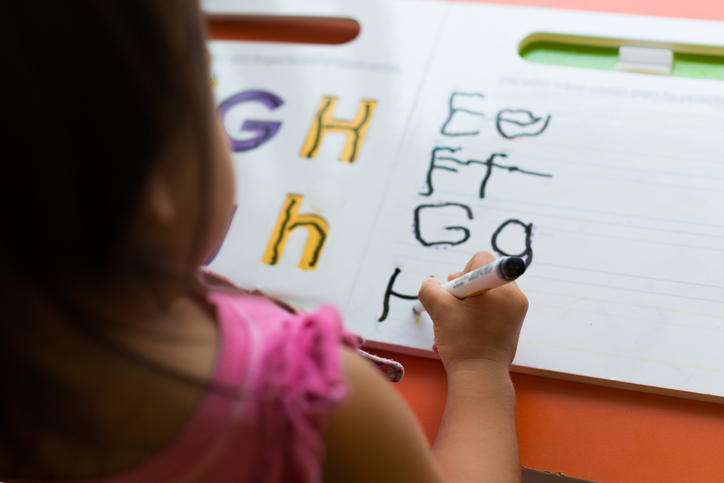Research Report: Outcomes of Talking Together – Evaluation and Results (oTTer): A randomised controlled feasibility trial
 Pub. Date
Pub. Date
 Pub. Type
Pub. Type

Introduction
Concerns have been raised in recent years about the oral language development of young children, particularly in areas of disadvantage. Estimates suggest that up to 50% of young children from deprived backgrounds have speech, language and communication needs (SLCN). These concerns have led to the launch of campaigns such as Hungry Little Minds, and more recently some new guidance and an assessment tool published by Public Health England (PHE); recognition of the fact that early oral language development is a public health issue. What is less well understood is how best to support children who are identified as being at risk of language difficulties. However, one potential avenue of support is through improvement of the home learning environment.
The importance of the home learning environment was brought into sharp relief with the first national lockdown due to Covid-19 in March 2020. Schools and early years settings closed to all but children of key workers or vulnerable children, which meant the majority of children were unable to access the support and input they usually receive through attendance at settings outside the home. A second national lockdown began in January 2021. Once again, all schools closed, and families had to juggle work, childcare and home schooling. Early years settings remained open, but attendance rates did not return to pre-Covid levels with many families choosing to keep their young children at home. Clearly, therefore, support for families to provide a high quality home learning environment has never been more important.
Unfortunately, there are few rigorously evaluated programmes that focus on the home learning environment. The focus of this report is a home-based programme delivered by the charity BHT Early Education and Training. The Talking Together programme combines a universal language screening for all two-year-old children in the Better Start Bradford (BSB) reach area, with a targeted 6-week programme delivered to parents in the home. The programme consists of one-to-one visits over a six-week period delivered by specialist language development workers (LDWs). The programme is designed based on evidence of the importance of parent-child interaction, and aims to provide parents with the skills, knowledge and confidence to provide a language rich environment. Moreover, the programme has been adapted for delivery in an ethnically diverse community, with LDWs able to deliver the programme in many of the languages represented in the community, and interpreters employed to support families if necessary.
Talking Together is currently commissioned by BSB; a public health initiative funded by the National Lottery Community Fund. Together with Born in Bradford, BSB have established a new birth cohort; Born in Bradfords Better Start (BiBBS) enables evaluations of the impact of services on the outcomes for children and families.
Aims and Objectives
The primary research aim of the oTTer project was to establish the feasibility of a definitive randomised control trial (RCT) of Talking Together. There were two key objectives involved in meeting this aim; a) to assess the feasibility of conducting a trial to evaluate the effectiveness of Talking Together including the acceptability and utility of the intervention outcome measures and b) to embed a qualitative evaluation within the oTTer trial to identify challenges with the implementation and delivery of the Talking Together programme as part of a trial. A secondary aim of the project was to understand factors in referral, uptake and attrition figures associated with Talking Together, which may inform the future provision of the service. The third aim of the project was to use the quantitative and qualitative data together to make an assessment of whether the Talking Together intervention shows evidence of promise.




